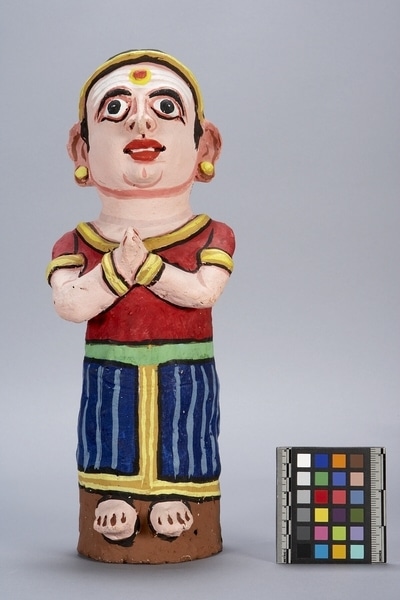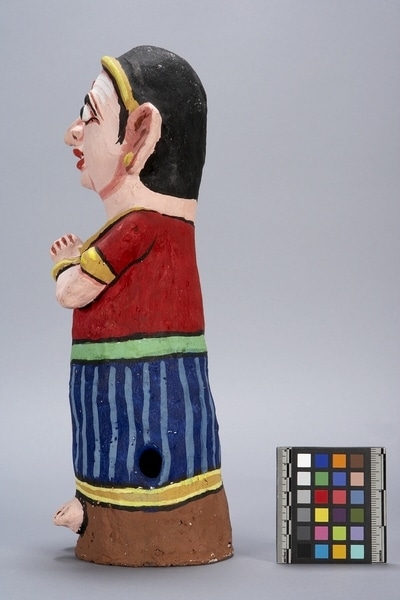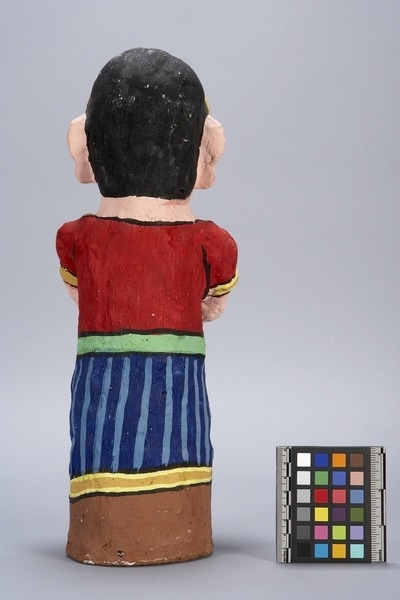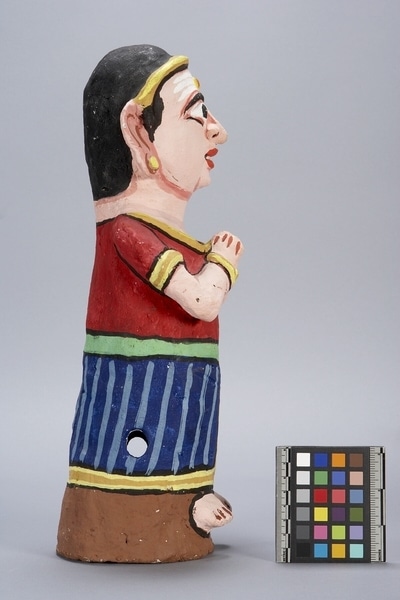Figure Item Number: Eg18 from the MOA: University of British Columbia




Description
Modelled clay figure of a human male child. Hollow pot-like construction open at the bottom with feet, arms, etc. Added on. Hands are folded in front of the body. Details such as tight cap, tight shirt, and skirt-like lower body cloth are painted on as are earrings and stripes across forehead. Colours of white, black, red, blue, yellow, green, brown, and flesh tone are used. Holes have been left in either side at the bottom.
History Of Use
Religious offerings are made by Velar potters, usually by special arrangement. These offerings are presented to Hindu village gods during festivals and are installed in local temples. A clay child figure (madalam pillai/infant child) is made as an offering by a barren woman or one whose child is sick, both in the spirit of exchange by proxy or as a pledge of worship if the desired result is obtained.
Iconographic Meaning
The position of the folded hands and the marks across the forehead (representing holy ash) both indicate reverence to god.
Cultural Context
ritual; religious offering
Item History
- Made by K. Muthusamy Velar (Maker) in Madurai, Tamil Nadu, India during February 1975
- Owned by Stephen Inglis before November 1975
- Received from Stephen Inglis (Seller) and Unknown (Funding source) during November 1975
What
Who
- Culture
- Tamil
- Creator
- K. Muthusamy Velar (Maker)
- Previous Owner
- Stephen Inglis
- Received from
- Stephen Inglis (Seller) and Unknown (Funding source)
Where
- Holding Institution
- MOA: University of British Columbia
- Made in
- Madurai, Tamil Nadu, India
When
- Creation Date
- during February 1975
- Ownership Date
- before November 1975
- Acquisition Date
- during November 1975
Other
- Item Classes
- ceramics; carvings & sculpture
- Condition
- good
- Current Location
- Case 104
- Accession Number
- 0400/0009